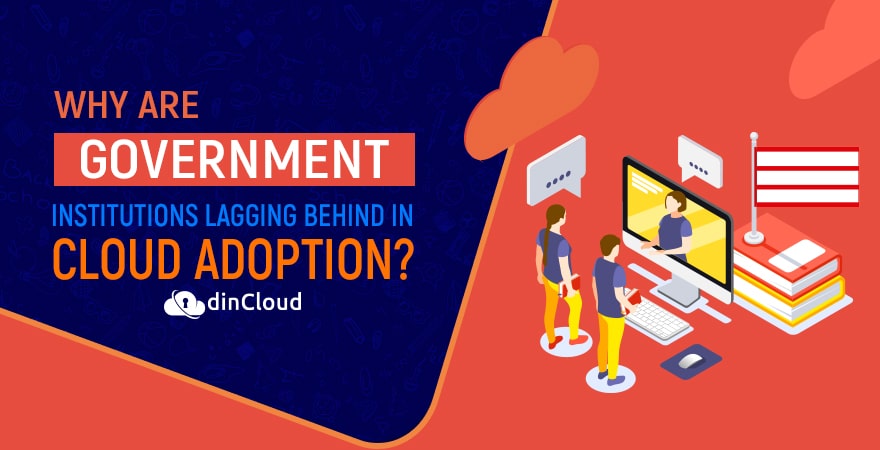Cloud Computing Solutions like Cloud Hosted Virtual Desktops are an equally attractive proposition for Government and State institutions. However, the recent cloud adoption rates by government institutions have been lagging behind those of the private sector.

There are a host of reasons for this trend, but things need to change so that the benefits of cloud solutions can also trickle down to the government sector. There are a host of national security, cyber security and data privacy issues that pose challenges in the process.
In this post, we will discuss the factors that are impeding the adoption of public cloud solutions by governments in general.
Lack of a Cloud Adoption Roadmap
It has been observed that most government institutions do not define a clear roadmap for cloud adoption. In addition to that, there is no clear intent behind cloud adoption initiatives, which results in a directionless approach.
A further problem, which basically stems from the lack of a cloud adoption roadmap and direction is lack of intent. There is always resistance to change, but organizations have to navigate this issue with change management initiatives.
Related: dinCloud – Solving the “Key Challenges of Cloud Adoption”
Non-Empowerment of Cloud Decision Makers
This matter has also posed challenges to cloud adoption across governments. The bureaucratic bottlenecks and hurdles typically associated with government entities result in a toothless implementation team and process.
To overcome this issue, government institutions looking for cloud adoption need to setup fully empowered teams that manage the whole cloud adoption processes. Only then will such initiatives deliver the desired outcomes.
Lack of Cloud Skills and Industry Knowledge
Most government institutions are well versed with managing their legacy, in house systems. However, most of that knowledge is of little to no use in the dynamic cloud industry. So, governments should consider seeking external cloud experts with relevant knowledge.
The cloud strategists and experts that are brought on-board from outside the organization are abreast with the latest trends in the cloud industry. Further, they bring a whole new perspective to the organization through their externalized input.
Related: 10 Compelling Reasons SMBs Need Cloud Computing
Not Leveraging Software as a Service (SaaS) to the Max
The SaaS sub-domain of cloud services is consistently growing at an exponential rate. This is because SaaS applications rapidly accelerate the process of making legacy processes cloud native. Governments should also leverage more SaaS solutions for the best results.
Now, there are many high quality SaaS solutions that even integrate well with legacy systems, whether its an interim measure or a mid to long term strategy. Success rates in cloud adoption can be drastically improved by leveraging SaaS more and more.
Related: Cloud Adoption by Higher Education Providers Expected to Soar
Lack of User Friendly Controls
The whole transition to the Cloud also takes its toll on government employees, which have become accustomed to using and managing legacy systems. To make the cloud transition seamless to the best extent possible, controls should be made simpler and user friendly.
Not Involving Other Functional Areas
This problem could exist in cloud adoption initiatives regardless of whether it’s a government institution or not. Typically, things go wrong when organizations consider that cloud adoption is the sole domain of the IT department and its personnel.
On the contrary, the cloud adoption will touch nearly every key functional area of the organization. To improve cloud adoption rates and the success therein, government institutions need to build cross functional teams of top personnel in each department.
Related: The Benefits of Greater Cloud Adoption
This will bring a centralized approach towards the whole cloud adoption process. Another advantage of this approach would be that any concerns that individual functional areas might have will be addressed alongside the implementation process.
Conclusion
The whole process of cloud adoption should be taken as a journey, rather than a destination. With the right mindset, approach, planning and implementation, there is no reason why the Cloud cannot deliver the right outcomes for government entities.
dinCloud is a leading provider of highly secure and regulatory compliant cloud solutions for your needs, so please feel free to Contact Us.


